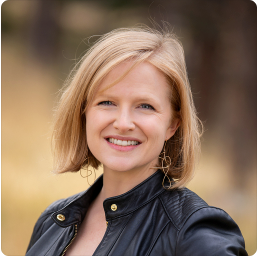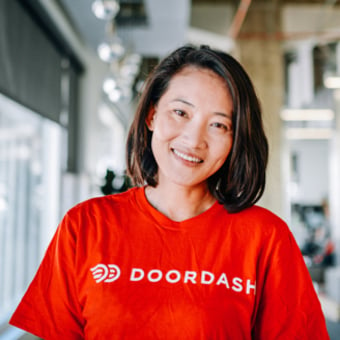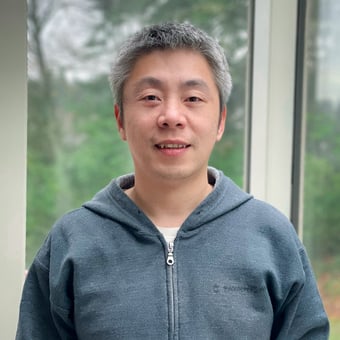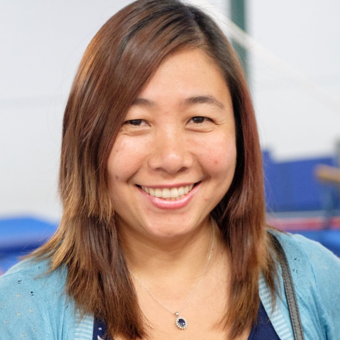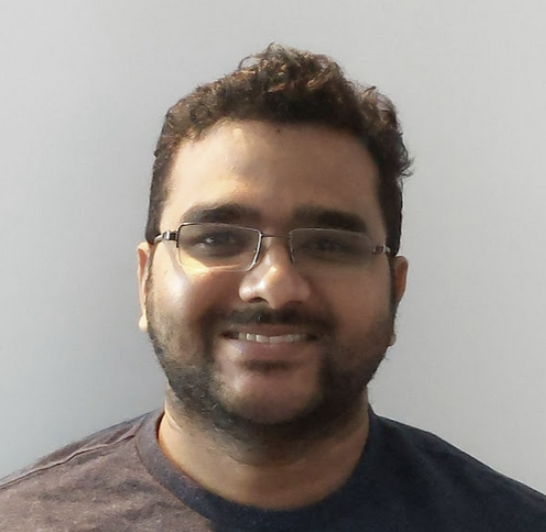As a tech company, it's our products and platform - and the engineers that build them - that power what DoorDash is able to offer our Consumers, Dashers, and Merchants every day. We thrive on tackling challenging technical problems and creating opportunities for customers, and take a lot of pride in what we do (and, as regular readers know, periodically share details about our work on this blog).
For our engineering teams to build both great software and meaningful careers, we as an org must periodically ask for feedback, revisit our vision for what makes us successful together and individually, and evolve our culture towards it. As our VP Ryan Sokol regularly says, we want engineers to build with us for the long term, and part of making that possible is to clarify what success looks like at each stage of an engineering career.
It's for this reason that in Q2 2023, we revisited our performance expectations for all engineers at DoorDash. We started by gathering a group of engineers to discuss which existing expectations were still relevant, and which ones were no longer serving us. We defined what we see as the traits of our most successful engineers at each level based on our three pillars: Business Outcome (how engineers deliver impact based on our direction and goals), People (how well we collaborate as a team and invest in each other's development and success), and Engineering Excellence (the quality of our products and systems, how fast we can move, and how efficiently our systems use resources). Starting at the Staff Engineer level, engineers have the opportunity to transfer to the engineering management ladder, where Staff Engineer - Manager, Senior Staff Engineer - Senior Manager, etc. (see this blog post for how we think about great engineering management).
For each of these pillars, we provide a tangible set of expectations and potential growth ladder for our engineers. During the performance evaluation process, eng managers review the guidelines with their reports and provide feedback based on team goals over the past year (for example, one engineer's role may have mainly been devoted to improving Eng Excellence, while another may be mostly focused on Business Outcome). Our goal is to balance the importance of business needs, people strengths and engineering excellence in context, and ensure that our expectations are seen as guidelines (rather than a list of requirements) to grow as an engineer.
Now that we have a revised version, we'll be building out additional tailored resources and support for engineering development with the aspiration that every engineer at DoorDash can have a rewarding, meaningful career. We also decided to share the expectations publicly, so that any engineer can have a deeper understanding of our culture and career development path should they choose to build with us at DoorDash.
- Business Outcome comprises two subcategories: Delivery and Direction. Our expectation is that engineers will create impact by executing projects effectively, and providing technical or product direction for themselves and others to do so. While Directional impact is not as crucial for engineers at the E3 and E4 levels, we do anticipate that engineers at the E5+ levels will contribute to the Direction of their scope as part of their overall responsibility for the Delivery of an area's success.
- People includes three subcategories: Collaboration & Alignment, Peer Growth & Community and Interviewing & Recruiting. Collaboration & Alignment assesses how effectively an engineer works within their team, as well as across teams and functions, to enable and empower others and promote a one team, one fight culture. Peer Growth & Community defines the expectations for engineers in terms of supporting their peers' growth and the Engineering community as a whole. Interviewing & Recruiting outlines expectations for engineers to assist in recruiting talented individuals for the company (based on hiring velocity).
- Engineering Excellence encompasses three subcategories: Quality, Velocity and Efficiency. Quality refers to the craft of engineering, delivering software that is reliable, efficient, accurate, scalable, extensible and secure. Velocity refers to how an engineer can facilitate speedy development for their colleagues by creating tools, designing an extensible architecture or providing reusable infrastructure, among other things. Efficiency refers to building software that meets intended functions with appropriate resources through efficient code, optimization and reusing existing platforms. By focusing on Quality, Velocity and Efficiency, engineering teams can deliver products that meet the needs and expectations of their customers and ensure long-term success and continued innovation.
Software Engineer (E3)
Tl;dr: You are a Productive Coder, translating clear requirements into high quality code that is rolled out safely. You follow engineering best practices while making contributions to engineering excellence through on-call and incremental fixes. You know how to unblock yourself and ask for help when needed.
Business Outcome
| Delivery | Understands how assigned tasks are related to the overall feature work. Translates functional and non-functional requirements into code, with some guidance from peers. Ensures on-time completion of work by asking peers for help if they have researched their problem and are still blocked. Uses developer tools to successfully roll out changes to production. Keeps track of progress of assigned tasks and communicates status effectively with stakeholders. |
| Direction | Unblocks self in completing tasks via available internal and external documentation. |
People
| Collaboration & Alignment | Works effectively with immediate team members to solve problems and deliver features. Participates in planning and regular team updates. |
| Peer Growth & Community | Engages in team building efforts. |
| Interviewing & Recruiting | If nominated, obtains and retains interview certification status, which includes conducting interviews for new grad and intern candidates, providing quality and timely feedback, and, as needed, participating in hiring debriefs. |
Eng Excellence
| Quality | Aware of business and product areas affected by quality objectives. Monitors quality metrics, including success and check metrics for all applicable production changes. Tests and dog-foods the products they work on. Promptly addresses customer and partner feedback. Debugs and fixes issues in development, test and production. Solicits code review in accordance with the DoorDash Code Review Process. Provides timely code reviews for peers. Serves as first responder with minimal oversight. Follows OnCall playbooks to mitigate issues in a timely manner. |
| Velocity | Effectively use tools to minimize manual tasks. Constantly learns about available tools and infra support to improve productivity. Proactively improves existing documentation as needed. |
| Efficiency | Follows cost efficiency best practices that will improve CPU/memory utilization. |
Software Engineer (E4)
Tl;dr: You are a Problem Solver who can design and implement solutions to defined problems independently with high quality. You collaborate with partners and peers to clarify problem definitions and make adjustments to them when necessary. Your expertise in areas that your team supports enables you to effectively help partners and peers make progress toward their goals. You help the team uphold the engineering excellence bar through insightful code reviews and guide your peers through execution.
Business Outcome
| Delivery | Articulates key customer problems and technical decisions related to assigned projects. Breaks down assigned feature work into tasks, and provides accurate cost estimates. Writes Technical Design Docs to document feature-level technical decisions. Independently translates functional and non-functional requirements into code. Proposes changes to Product Requirement Docs and/or Technical Design Docs to improve outcome of deliverables and/or unblock progress. Keeps track of progress of own work and dependencies, adjusting estimates and priorities of tasks when needed. |
| Direction | Uses data analysis and customer/partner feedback to identify opportunities for feature-level improvements. Contributes to team planning and retrospectives. |
People
| Collaboration & Alignment | Unblocks other team members by proactively answering questions, giving tech talks about areas within scope, etc. Works effectively with partners from various functions or teams to unblock self on development. Effectively communicates project updates and blocking issues to stakeholders. Independently builds effective relationships with key partners. |
| Peer Growth & Community | Engages in team building efforts. Acts as a role model for other engineers, demonstrating and championing behaviors that exemplify company values through day-to-day work and interactions. Shares constructive feedback and guidance frequently and empathetically. |
| Interviewing & Recruiting | If nominated, obtains and retains interview certification status, which includes conducting interviews for candidates, providing quality and timely feedback and actively participating in hiring debriefs. |
Eng Excellence
| Quality | Upholds and improves quality objectives and processes within the team, such as by articulating the business and product impact of quality metrics in trade-off discussions, providing code-review feedback on conformance to DoorDash and industry standards, and improving metric quality (e.g. fixing logging and pipeline issues). Consistently applies architecture principles and design patterns to the software they build and maintain. Writes high-quality code that is concise, efficient, durable and easily understood, and that adheres to DoorDash standards. Serves as first-responder OnCall independently. Proactively prevents and mitigates issues to ensure quality compliance, such as by updating OnCall playbooks as needed. |
| Velocity | Contributes to initiatives such as tooling and automation that improve the development experience of team members. Contributes to documentation that enables other engineers to move faster. Contributes to removing tech debt. |
| Efficiency | Ensures cost efficiency best practices in design and code reviews. Plays an active part in system efficiency development practices, such as infra provisioning. |
Senior Software Engineer (E5)
Tl;dr: You are a Project Owner who can understand customer problems and translate objectives into well defined and scoped sub-problems for yourself and peers. You are capable of making long term vs short term trade-offs and design high-quality, durable solutions. You set a high bar for craftsmanship, reliability, and scalability, and lead by example in execution. You have effective project management skills and can manage moderate levels of ambiguity. You take ownership of areas within your team's charter and make improvements that reduce toil for your customers and peers. You identify gaps and provide recommendations to your cross-functional partners with regularity. You are a role model within your own team, showing up as an empathetic and influential teacher and leader. You collaborate with your partner teams with empathy and can exert influence on their execution to provide the best solutions for DoorDash.
Business Outcome
| Delivery | Delivers one or more OKR projects, either independently or by leading a group of engineers. Makes and owns most technical decisions within scope without oversight. Actively participates in defining key customer problems. Breaks down projects into feature level work that can be executed in parallel, identifies dependencies and provides accurate cost estimates. Writes Technical Design Docs to document project-level technical decisions and how sub-features interact with each other. Produces exemplary code for core functionalities of key technical components. Sets up and maintains processes (e.g., scrums, status reports) to ensure effective coordination among Eng peers and/or cross-functional partners. Keeps track of project-level dependencies and risks, identifies opportunities for loading balance and assignment changes within the project and escalates to stakeholders whenever necessary to drive for on time delivery. |
| Direction | Uses data analysis and customer/partner feedback to identify opportunities for product/technical areas within team charter. Actively incorporates feedback from customers and partners into team planning. Creates project proposals and researches feasibility and risks. Directly influences team roadmaps by adding, triaging and prioritizing project backlogs. |
People
| Collaboration & Alignment | Ensures quality of project intake by asking questions and sourcing information to ensure best possible outcomes. Identifies key stakeholders and ensures they are included in the decision making process at the appropriate time. Unblocks other teams by conducting code and design reviews, proactively answering questions, giving tech talks, connecting peers with potential solutions, etc. |
| Peer Growth & Community | Engages in team building efforts. Acts as a role model for other engineers, demonstrating and championing behaviors that exemplify company values through day-to-day work and interactions. Shares constructive feedback and guidance to teammates with empathy. Consistently highlights and recognizes working partner contributions in project and/or Eng win reports. |
| Interviewing & Recruiting | If nominated, obtains and retains interview certification status and conducts interviews and/or sell calls for candidates, actively participating in hiring debriefs. Based on hiring needs, participates in hiring events, such as publishing an Eng blog post, delivering tech talks or participating in panels at recruiting events. |
Eng Excellence
| Quality | Enforces team-wide quality objectives, such as by calibrating metrics to ensure accurate representation of software quality, driving accountability and leading by example with incident mitigation, improving logging and monitoring, and leading design reviews. Proactively gathers customer feedback and monitors bug trends, such as from support channels and internal groups, promptly addressing issues with engineers and cross-functional partners. Influences system and team planning and prioritization by articulating the impact of quality initiatives to business outcome. Serves effectively as first-responder and/or incident commander; leads by example via building and modeling best practices. |
| Velocity | Drives initiatives such as tooling, automation and documentation that improve the development experience and productivity of team members. Designs solutions that are reusable, extensible, and self-serviceable. Reduces tech debt where possible. |
| Efficiency | Considers cost efficiency as part of key technical designs. Strikes balance between business objectives, reliability and cost. Identifies and drives architecture improvements that will significantly improve system efficiency within the team. |
Stay Informed with Weekly Updates
Subscribe to our Engineering blog to get regular updates on all the coolest projects our team is working on
Please enter a valid email address.
Thank you for Subscribing!
Staff Engineer (E6)
Tl;dr: You are a Technical Leader and trusted advisor to your manager and peers within and outside of your team. You are a key influencer in the roadmaps of your team and area of expertise. You are able to manage high levels of ambiguity, identify opportunities and translate them into objectives for your team. You are responsible for the formation and delivery of your team's OKRs. You drive impact through outsized direct contributions, being a force multiplier, eliminating single points of failure (including yourself) and/or uplifting your team members' skill set. You collaborate with partner teams, influencing their roadmaps and delivering on joint goals. You set the engineering excellence bar for your team and consistently identify areas for improvement.
Business Outcome
| Delivery | Leads entire team on solving mission-critical customer and business problems, filling in any Eng and/or cross-functional gaps when needed. Works independently to tackle critical problems for the team and creates technical solutions that can be easily leveraged by other engineers. Makes and owns decisions independently, even in ambiguous situations. Sets up and maintains processes (e.g., project reviews, scrums of scrums) to ensure effective coordination among ongoing projects. Proactively builds alignment with key stakeholders, anticipating and mitigating risks across orgs to drive for on-time delivery. |
| Direction | Uses data analysis and customer/partner feedback to shape (and reshape, as needed) product direction and technical thinking. Creates vision for the team that defines key customer problems and outlines major long-term technical and product investments. Creates technical roadmaps for the team that have clear milestones. Proactively aligns team vision/roadmaps with partner teams, building joint goals and escalating when necessary. |
People
| Collaboration & Alignment | Builds strong communication channels to ensure delivery of quality feedback and diversity of opinions. Consistently demonstrates listening, curiosity and empathy when working with team members and stakeholders to build alignment and roadmaps. Balances engineering principles with business objectives for the best long-term outcome when addressing conflicts arising within teams or with cross-functional partners. Consistently seeks and flags redundancies and duplication of effort across teams. Serves as a virtual team leader for cross-org projects, promoting an engineering culture of One team One fight while encouraging deep thinking, innovation and excellence. |
| Peer Growth & Community | Supports their manager in proactively identifying and closing gaps in experience and belonging of team members. Participates in activities that contribute to the larger engineering community (e.g., training facilitation and design, tech talk/summit organization, site leadership, etc.). Acts as a role model for other engineers, demonstrating and championing behaviors that exemplify company values through day-to-day work and interactions. Proactively invests in the growth of their teammates by sharing constructive feedback and guidance frequently and with empathy. |
| Interviewing & Recruiting | If nominated, obtains and retains interview certification status and conducts interviews and/or sell calls for candidates, actively participating in hiring debriefs. Based on hiring needs, participates in recruiting efforts, such as publishing an Eng blog post, delivering external tech talks, or participating in panels at recruiting events. Acts as champion for Eng candidate experience by leading interview training, improving tooling and/or actively overseeing calibration of interviewer skills and question bank quality. |
Eng Excellence
| Quality | Improves quality objectives within the team and for partners, such as by ensuring cross-team alignment, defining and operationalizing metrics that effectively represent the quality of work by the team, and driving adoption of best practices that prevent issues from reaching production. Defines the requirements for a high bar of craftsmanship, reliability and scalability, and upholds objective standards for evaluation and tracking. Ensures longevity of deliverables and removes single-points-of-failure (including themselves) by defining onboarding processes, runbooks, migration paths, etc. Sets up processes for continuous improvements to team Oncall, holds others accountable, and drives sustained success in Oncall compliance. |
| Velocity | Drives initiatives such as tooling, automation and documentation that improve the development experience and productivity of team members and partners. Identifies and drives architecture improvements that accelerate developer efficiency for the team and partners. Ensures sustained investment in velocity for their team (e.g. team backlog triages, velocity resource allocation in team planning, etc). Threads the needle to push the business forward without over-building or under-building |
| Efficiency | Identifies and drives architecture improvements that will increase efficiency for their team and partners. Operationalizes cost metrics for the team and proactively monitors trends in relation to target. Incorporates cost projections into team planning. |
Senior Staff Engineer (E7)
Tl;dr: You are a Technical Leader and trusted advisor to your org lead. Your scope is dramatically increased from E6. The complexity of your problems span multiple teams, potentially in different organizations. Influence becomes an essential skill given the number of systems and people you are tasked with aligning. Your influence is scaled through documents more than code, but you still write software, prototype larger solutions and debug hard technical problems to maintain credibility and a level of detail. Your influence is beyond technical solutions - you're able to shift an org's product or business direction by providing long-term technical vision and strategy. You make the teams around you better, but not dependent upon you, through teaching, guidance and followership.
Business Outcome
| Delivery | Leads entire org on solving complex, mission-critical customer and business problems, filling in any Eng and/or cross-functional gaps when needed. Works independently to tackle critical problems for the org and makes foundational technical contributions that can be easily leveraged by other engineers. Proactively builds alignment with key stakeholders, anticipating and mitigating risks across orgs to drive for on-time delivery. |
| Direction | Uses data analysis and customer/partner feedback to influence business and product strategy for the org. Creates vision for the org that defines key customer problems and outlines major long-term technical and product investments and milestones. Proactively aligns org vision with partner orgs by building shared objectives and principles. Advises org leads on org structure in support of business and people growth and sustainability. |
People
| Collaboration & Alignment | Effectively collaborates with leaders from other functions or orgs. Consistently demonstrates listening, curiosity and empathy when working with team members and stakeholders to build alignment and roadmaps. Clarifies responsibilities across orgs to resolve conflicts and build alignment on technical vision, direction, priorities, timeline and execution plan in a way that balances the needs of different teams for the best long term outcome. Ensures we don't simply build based on org structure. Serves as a virtual team leader for cross-org projects, promoting an engineering culture of One team One fight while encouraging deep thinking, innovation and excellence. Drives the adoption of platform, infra and framework across the company. Proactively builds effective communication channels across teams to ensure delivery of quality feedback and diversity of opinions. |
| Peer Growth & Community | With their manager, drives people programs and initiatives for their own organization to improve experience and belonging. Drives and participates in activities that contribute to the larger engineering community (e.g., training facilitation and design, tech talk/summit organization, site leadership, etc.). Acts as a role model, teacher, guide and influencer for other engineers, demonstrating and championing behaviors that exemplify company values through day-to-day work and interactions. Proactively invests in the growth of other engineers by sharing constructive feedback and guidance frequently and with empathy. |
| Interviewing & Recruiting | If nominated, obtains and retains interview certification status and conducts interviews and/or sell calls for candidates, actively participating in hiring debriefs. Proactively reviews interview feedback and helps calibrate and improve interviewer skills across the company. Based on hiring needs, participates in hiring events, such as publishing an Eng blog post, delivering tech talks or participating in panels at recruiting events. Acts as champion for Eng candidate experience by leading interview training and/or actively overseeing calibration of interview questions. |
Eng Excellence
| Quality | Drives alignment of quality objectives for all teams within the org and with partners.Defines a high quality bar and ensures consistent application within org and with partner teams. Identifies and drives org-wide improvements of common deficiencies in systems, tools, processes and product areas. |
| Velocity | Identifies and drives architecture improvements that accelerate developer efficiency for their org and partners.Identifies and drives solutions to improve large organization processes in support of velocity (e.g. design review process, knowledge sharing sessions, etc). Proactively reviews investment areas for the entire org to avoid over-building.Creates operating principles in support of independent and effective decision-making across the org. |
| Efficiency | Identifies and drives architecture improvements that will increase efficiency for their org and partners. Influences product direction to achieve better ROI. Identifies and drives cost efficiency best practices for the org, such as evaluating feasibility of adopting external technical solutions, and advises org leads on buy vs. build decisions on long-term investments. Influences org-level cost targets for the next 6-12 months and creates technical roadmaps to achieve them. |
Principal Engineer (E8)
Tl;dr: You are a Creator and Driver of best practices Eng-wide. You are a high-level thinker who defines and drives OKRs for the company, and you are often directly responsible for their success. You achieve that success by 1) defining and implementing a technical vision across multiple domains, 2) influencing the business and product strategies at the highest level, 3) driving change through end to end execution, some of which will be your direct contribution, and 4) elevating engineering culture and excellence org wide. You utilize your vast experience, judgment and communication skills to summarize hard problems, influencing leadership and all of engineering to write better software in service of our customers.
Business Outcome
| Delivery | Leads company-wide effort that require complex coordination across multiple product surfaces or platform/infra systems in different orgs, filling in any cross-functional gaps when needed. Works independently to tackle critical problems across orgs and makes foundational technical contributions that can be easily leveraged by other engineers. Serves as the tiebreaker for technical decisions when alignment cannot be reached. |
| Direction | Uses data analysis and customer/partner feedback to influence business and product strategy for the company. Creates long term vision for company-level Eng excellence (e.g., reliability, velocity, efficiency) and outlines major long-term technical and product investments. Proactively aligns company-level Eng roadmaps with key stakeholders across all orgs and ensures cascading OKRs at the org level. Advises Eng staff on org structure for best results. Creates operating principles and best practices for the entire company and proactively builds alignment across orgs. |
People
| Collaboration & Alignment | Collaborates efficiently with leaders from other functions or orgs. Clarifies responsibilities across the company to resolve conflicts and build alignment with company leaders on technical vision, direction, priorities, timeline and execution plan. Serves as a virtual team leader for cross-company projects, promoting a culture of One team One fight. Drives the adoption of platforms, infra and frameworks across the company. |
| Peer Growth & Community | Main contributor in defining, establishing and supporting the culture of DoorDash engineering via engineering-wide or company-wide people programs/OKRs. Sponsors external-facing efforts to advocate DoorDash culture more broadly. Drives and participates in activities that contribute to the larger engineering community (e.g., training facilitation and design, tech talk/summit organization, site leadership, etc.). Acts as a role model, teacher, guide and influencer for other engineers, demonstrating and championing behaviors that exemplify company values through day-to-day work and interactions. Proactively invests in the growth of other engineers by sharing constructive feedback and guidance frequently and with empathy. |
| Interviewing & Recruiting | If nominated, obtains and retains interview certification status and conducts interviews and/or sell calls for candidates, actively participating in hiring debriefs. Proactively reviews interview feedback and helps calibrate and improve interviewer skills across the company. Based on hiring needs, participates in hiring events, such as publishing an Eng blog post, delivering tech talks or participating in panels at recruiting events. Acts as champion for Eng candidate experience by leading interview training and/or actively overseeing calibration of interview questions. |
Eng Excellence
| Quality | Evolves company-wide quality objectives to meet company goals. Evolves company-wide quality bar to be top tier in the industry. Identifies and drives company-wide improvements of common deficiencies in systems, tools, processes and product areas. Identifies and drives solutions to shape and sustain a company culture that values quality. |
| Velocity | Creates operating principles in support of independent and effective decision-making across the company. Identifies and drives solutions to shape and sustain a company culture that values velocity. |
| Efficiency | Identifies and drives cost efficiency best practices company-wide. Influences company-wide cost targets for the next 12+ months and creates technical roadmaps to achieve them. Identifies and drives solutions to shape and sustain a company culture that values efficiency. |

